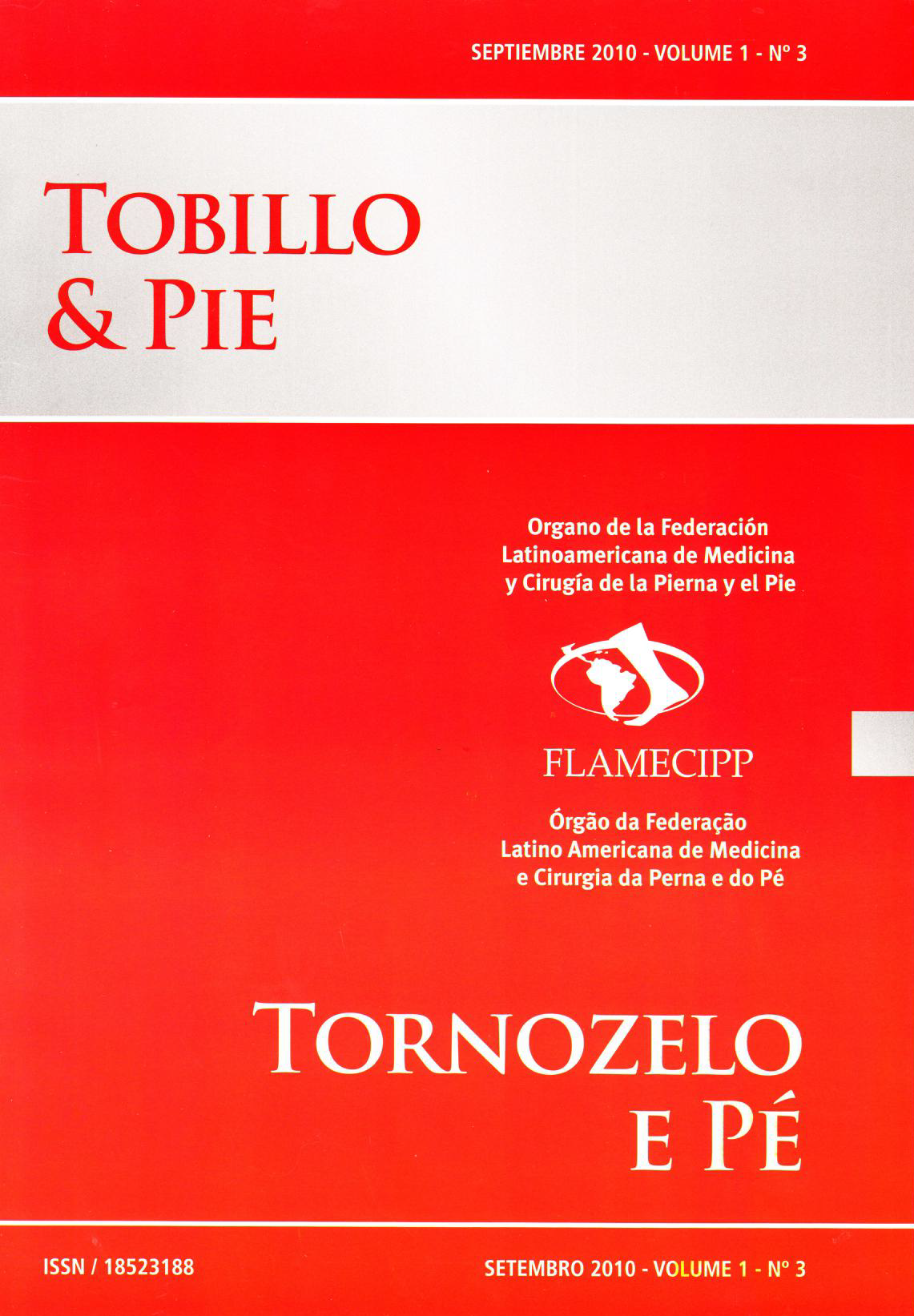Osteotomía distal percutánea de los metatarsianos como método terapêutico para úlceras del antepie
Keywords:
Osteotomy, Percutaneous, Metatarsals, UlcerAbstract
The diabetic foot ulcers have as etiologic factors the diabetic neuropathy and the mechanic factor. As orthopaedic surgeon we can modify the and factor (mechanic) through corrective osteotomy and surgical discharge. Currently we have new technology to do the above osteotomy and there is the percutaneous or minimal incision surgery (MIS). Purpose: -Show that the distal osteotomy of the metatarsals shorten periods of time to solve diabetic ulcers, we can achieve discharge of decubitus and better charge distribution. -Expose the minimal incision surgery as less morbidity practice, and with the learning curve finished, it is a fast and simple technic. lnclusion criteria: Ulcers refractory to standard treatment, diabetic type 1 and 2, previous curedulcer, till Wagner state 3 (inclusive). Exclusion criteria: Severe vasculopathy, amputation of more than 1 toe, active osteomyelitis, Wagner of more than 4. Material and methods: We followed the cases of 32 feet with ulcers from January 2006 until January 2009, group A: with conservative treatment and debridement, total: 19 feet (59,375%), group B: mini invasive distal metatarsar osteotomy, total: 13 feet (40,625%). we use our equipment. Design of methodology: descriptive, propective, observational, comparative and experimental. The evaluation was made with x-ray, front, profile, oblique, we measured intermetatarsal angles, metatarso-phalangeal and metatarsal parabola. We based th is presentation in Wagner Classification and
AOFAS (American Orthopaedic foot and ankle Society) Score. Result: We evaluated 32 feet during 3 years, having an average of AOFAS score in group A pre-treatment: 45,421 points and post-treatment: 70,631 points, it gives a diference of 25,21 points of improvement. In group B pre-treatment average 51,384 points, and post-treatment 80,076 points, showing an improvement of 28,692 points. Even if the difference in favor of group B is little, the final result is favourable. We add an average time of treatment of group A of 6,89 months versus group B 2,769 months, showing a difference of 4,121 months in the treatment of the ulcers. Discussion: There is no direct reference of international literature with experience to minimal incision surgery and the diabetic ulcer treatment. We find a difficult dilemma, do we practice surgery that is not mentioned as indication for a pathology?. As medical science and evaluating the positive results of the MlS, along with experience of the Profesors Mariano de Prado (Spain) and Stephen Isham (U.S.A.) we were motivated in this presentation. Conclusion: The treatment with MIS osteotomies: -lt is an innovative method surgical, mini invasive, according to tendencies in the international panorama. -lt minimizes the time of treatment and healing, we have to recall that the rest in diabetic patients makes morbility higher. -Less quantity of recurrence in group B. -Patient satisfied.


